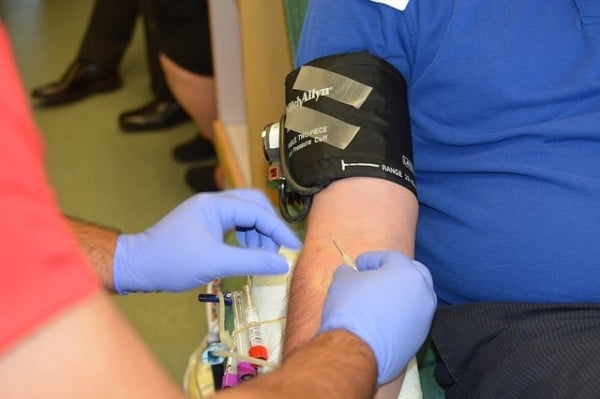
Medical marijuana is in the news constantly, with supporters and naysayers going back and forth about the potential health benefits or disasters waiting to happen as more and more states legalize cannabis for medical use. It is being prescribed in those states for everything from epilepsy to back pain to helping cancer patients manage their treatment-related symptoms.
One surprising recent discovery suggests that cannabis could also help chronic blood clotting disorders as well.
Common Clotting Disorders
There are three common bleeding disorders, and they are usually caused by either environmental factors or genetics.
- Hemophilia, both types A and B, are primarily genetic in origin and occur when there is a lack of clotting factors in the patient’s blood. It’s rare, but can cause severe bleeding and bruising.
- Factor bleeding problems cause issues with blood clotting and can be caused by a number of things. They are classified by Roman numerals: II, V, XII, etc.
- Von Willebrand’s disease is a genetic condition that is inherited from the parent. It is defined as a lack of the Von Willebrand factor in the blood, which is necessary for clotting.
Symptoms that mimic bleeding disorders, such as heavy bleeding, wounds that won’t clot or extreme bruising, can be caused by the use of prescription blood thinners. It’s important to talk to a doctor and let them know if you have been prescribed these medications.
Marijuana as Medicine
There are a number of studies that suggest medical marijuana has a host of health benefits, including the treatment of:
- Chronic pain management
- Mental illnesses, including anxiety and depression
- Epilepsy
- Muscle spasms
- IBS and Crohn’s disease
There is also research that suggests the nonpsychoactive component of marijuana, known as cannabidiol or CBD, has medical applications in the treatment of mental and physical illnesses, and even neurological illnesses like Alzheimer’s, Huntington’s and Parkinson’s. CBD may also be helpful in the treatment of autoimmune disorders.
The fight against medical marijuana isn’t due to the fact that this plant offers other treatment options for patients, especially those that don’t respond to traditional treatment. It’s because the drug itself is still considered Schedule 1 by the federal government. This puts it in the same category as dangerous illegal drugs like heroin and cocaine. This, paired with the fact that all the marijuana used in medical research is sourced from a single grower, means the research is limited at best. It hasn’t stopped researchers from making new discoveries, but it does limit what they can find.
Medical Marijuana and Blood Clotting Disorders
Medical marijuana is being explored as a possible complementary treatment for hemophilia. It doesn’t provide any clotting factors, so it is not a replacement for traditional hemophilia treatment, but it can help reduce the side effects.
Cannabis can be used to help relieve headaches, ease joint pain that is often associated with the condition and help manage the fatigue that often accompanies the treatments. It can also be used to assist with pain management, as many prescription painkillers may not be options for individuals with hemophilia because they interfere with the body’s ability to produce clotting factors.
It may even be beneficial for patients who don’t suffer from one of the common blood clotting disorders. A study out of the University of Texas at Dallas found that using marijuana to treat chronic pain could also help lower patients’ risk of stroke.
Marijuana has been studied in the past because of its effect on neurological spasticity — a condition that often affects patients with traumatic spinal injuries and can accompany other chronic pain issues. Understanding the changes the body experiences when using medical marijuana or CBD may help us understand what causes neurological and cognitive changes.
Medical marijuana does have some side effects, but its benefits far outweigh any downsides — and we’re discovering more by the day. Research in the United States is limited due to the drug’s Schedule 1 categorization, but even with the limited resources available in the U.S., researchers have been able to discover many previously undiscovered medicinal benefits of the humble marijuana plant.
It’s difficult to know where the medical marijuana industry will go from here. We currently have a presidential administration that is adamantly against the legalization of marijuana for any use, medical or recreational, and are still fighting just to help the plant shed its Schedule 1 status. We won’t be able to make any real progress until that happens, but in the meantime, there are plenty of states that are taking a few steps forward and trying to make medical marijuana available to anyone who might need it.




